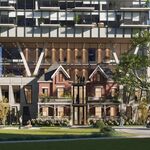innsertnamehere
Superstar
1. 407 east was a larger project with about 10km of extra freeway involved, and completed only 2 years ago. So, no it's not the largest project in a generation.
2. I love how vast cost increase concerns are very valid to the viability of a highway project but completely ignored for transit project discussions.
3. $4-5 billion seems reasonable. The opponent cites increased costs coming from the 427 extension, but admits about half of it is from operations. On a per-km basis the 427 extension is roughly similar to the 407 east extension, at about $50 million per km. The 407 East was a fairly complex urban highway and involved realigning the 401 in two locations, he's downplaying how complex the project was. At worst the 413 has only marginally more complex interchange conditions at the 407/401, but it has similarly general rural locations for construction for most of it's alignment, with low interchange densities (the 427 had interchanges every 2km, there are less on the 413 and 407 east), and actually one less full movement freeway interchange over the 407 East project, which is where most costs are (4 vs 5 on the 407).
4. As far as I know, no decisions have been made if the 413 will be a toll facility or not. While I wouldn't be surprised if Ford tries to build it without tolls, I continue to be supportive of operating it as a toll facility with reasonable tolls, likely slightly below the 407 east rates.
Last edited:




